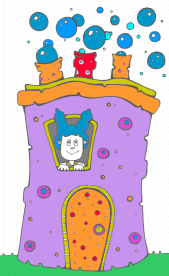|
R-2000 Housing
 Many Canadians have decided to live in R-2000 homes, and with good reason! R-2000 houses are world famous for their energy efficiency and comfort. The R-2000 home offers many advantages, including lower energy bills, the absence of outside noise and drafts, and better indoor air quality. The R-2000 standard for house construction was created in the early 1980's to demonstrate the quality of housing that could be built with the best of modern materials and building techniques, and since then it has helped influence changes to building codes, and it has set a precedent for new homes in Canada. For this reason, the gap between R-2000 and conventional homes has narrowed considerably over the years. Many Canadians have decided to live in R-2000 homes, and with good reason! R-2000 houses are world famous for their energy efficiency and comfort. The R-2000 home offers many advantages, including lower energy bills, the absence of outside noise and drafts, and better indoor air quality. The R-2000 standard for house construction was created in the early 1980's to demonstrate the quality of housing that could be built with the best of modern materials and building techniques, and since then it has helped influence changes to building codes, and it has set a precedent for new homes in Canada. For this reason, the gap between R-2000 and conventional homes has narrowed considerably over the years.
Realizing that technology had changed, in 1994 the R-2000 standard was updated. The process took a full year of careful studies and consultations with home builders associations, utility companies, provincial governments, financial institutions, and others. The result was a new standard that reduced the energy consumption of R-2000 homes by 15% compared to the old standard! In addition, new R-2000 homes have lower levels of indoor air pollution, and are environmentally responsible.
New R-2000 homes are built with large amounts of insulation, to improve on heating and cooling efficiency, thus reducing the energy consumption of the home. In addition, energy efficient lighting and appliances are installed to improve the overall level of energy use. Not only does this save the home owner money on the electricity bills, but it also contributes to an overall decrease in energy consumption within the community.
Unfortunately, indoor air pollution is common in our homes. The old R-2000 houses had ventilation systems that replaced the indoor air with fresh air eight times a day. This air flow served to dilute the indoor air pollutants, reducing their risk to the home's inhabitants. While this approach does work, the new R-2000 standards have recognized a need for eliminating many of the sources of indoor air pollution within the home. New R-2000 homes are built with materials that have few, if any, noxious chemicals that can have adverse health effects.
 Environmental responsibility is another important feature of new R-2000 homes. Water consumption in the home has been cut dramatically by installing water-saving taps, shower heads, and toilets. The average 3-person home in Canada consumes 1,000 liters of water every day, some 40% of which is used to flush toilets alone! The new R-2000 homes are able to cut this consumption by 35%. It is important to protect our fresh water supplies, and R-2000 homes are built with this in mind. Besides the positive environmental effects of conserving water, it also saves the home owner money. Environmental responsibility is another important feature of new R-2000 homes. Water consumption in the home has been cut dramatically by installing water-saving taps, shower heads, and toilets. The average 3-person home in Canada consumes 1,000 liters of water every day, some 40% of which is used to flush toilets alone! The new R-2000 homes are able to cut this consumption by 35%. It is important to protect our fresh water supplies, and R-2000 homes are built with this in mind. Besides the positive environmental effects of conserving water, it also saves the home owner money.
Reduced water consumption is only one of the components of an environmentally "friendly" house. R-2000 homes must also be built with recycled building materials. These materials can range from recycled wood fibers and newspapers to shredded plastic containers and broken glass! Some builders even offer special "environmental packages" that include built-in recycling facilities and composters.
Keep in mind that although R-2000 homes already safely control most of these pollutants, there are things you can do to reduce the health risks within your own home.
|



This digital collection was produced under contract to Canada's Digital Collections program, Industry Canada. The web site was produced by a youth team at the Saskatchewan Lung Association.
